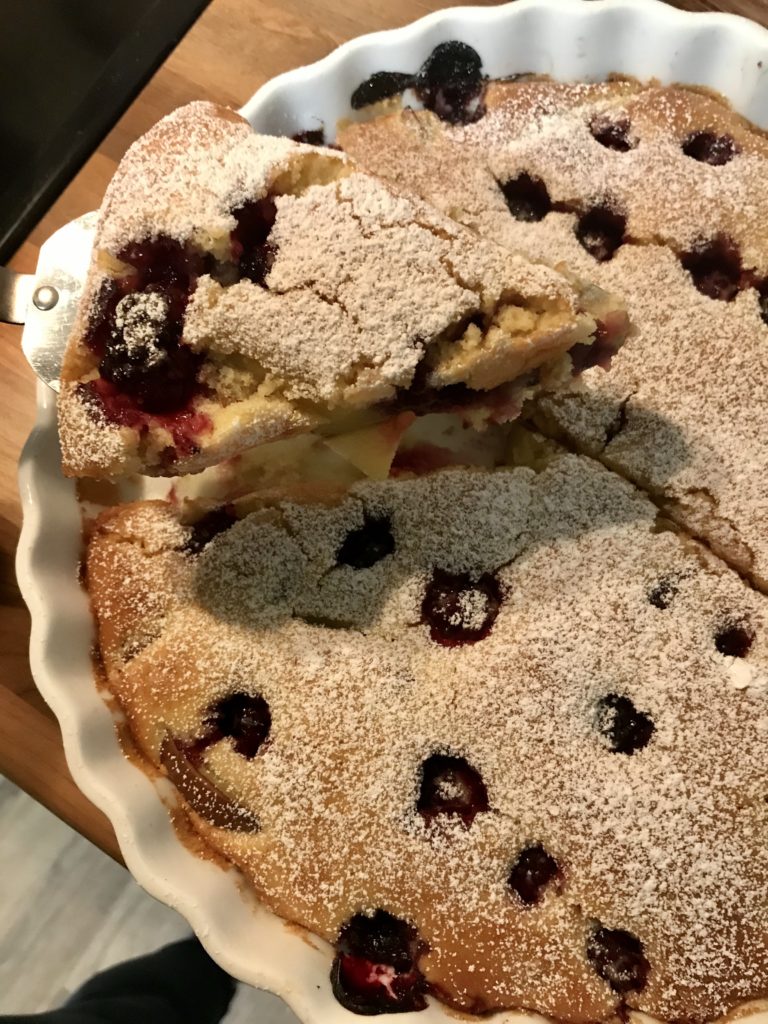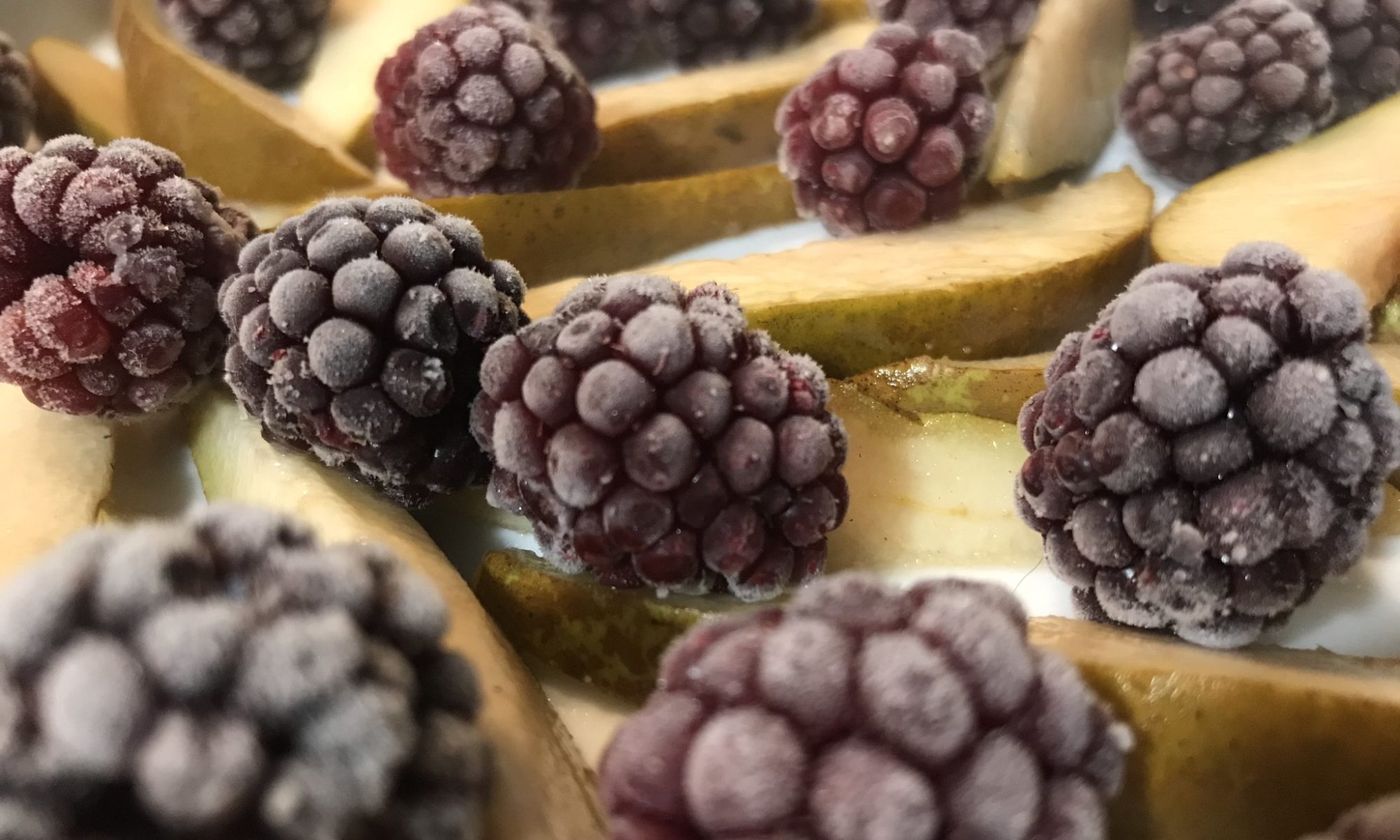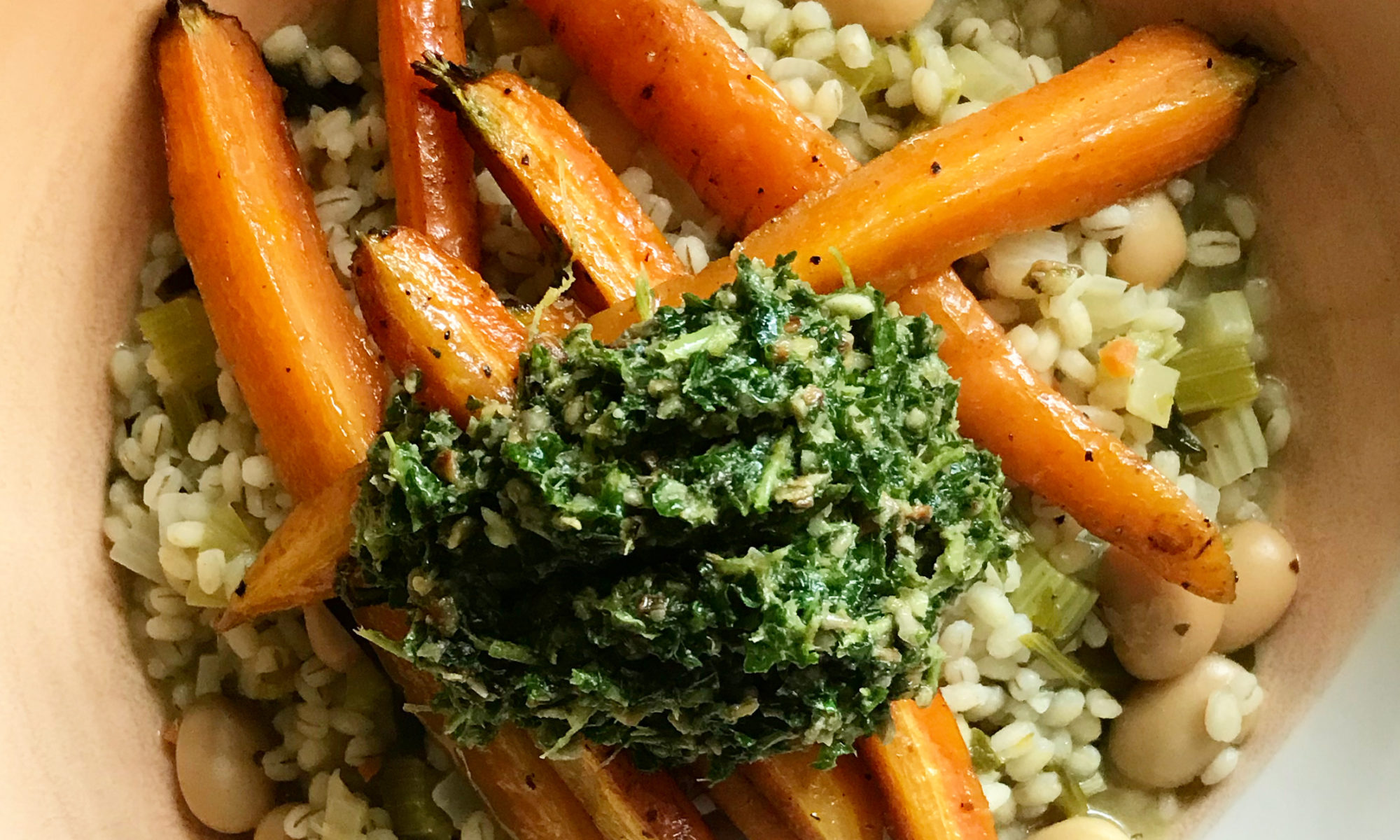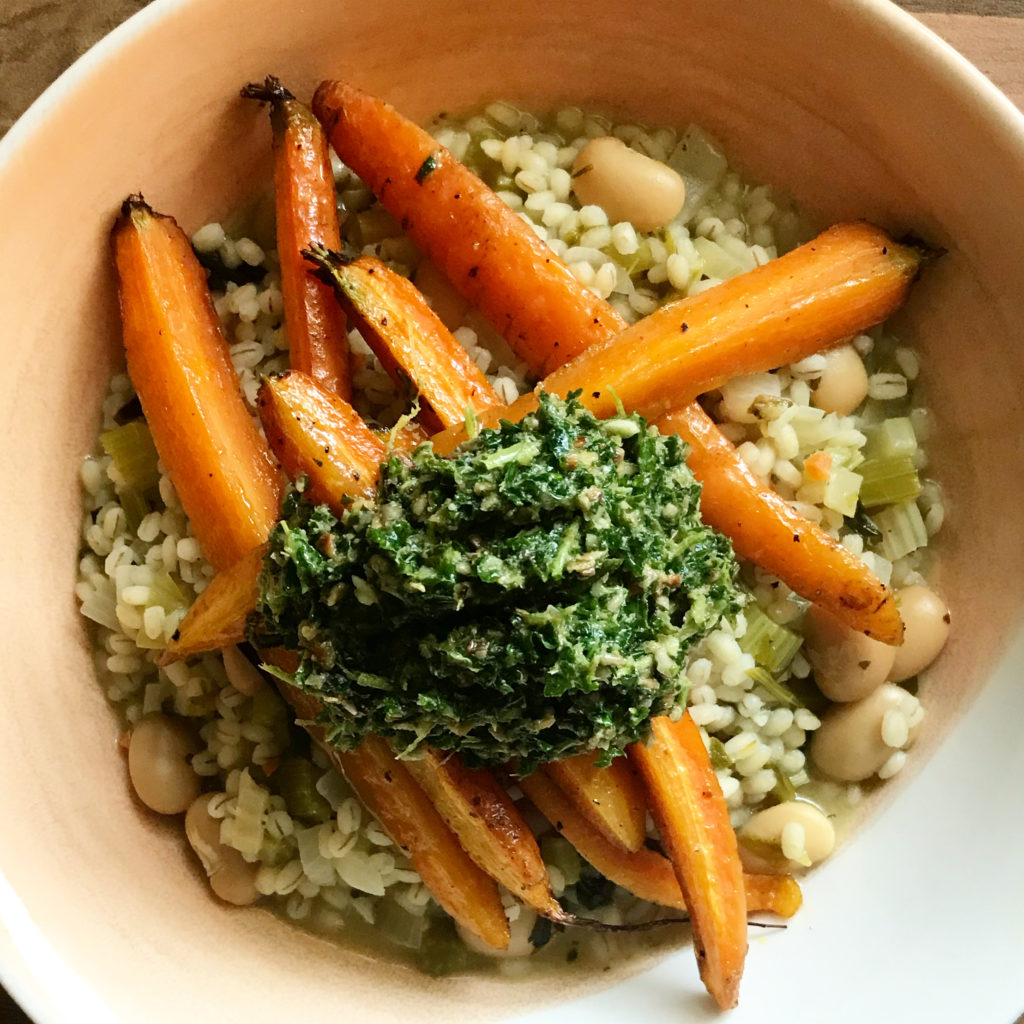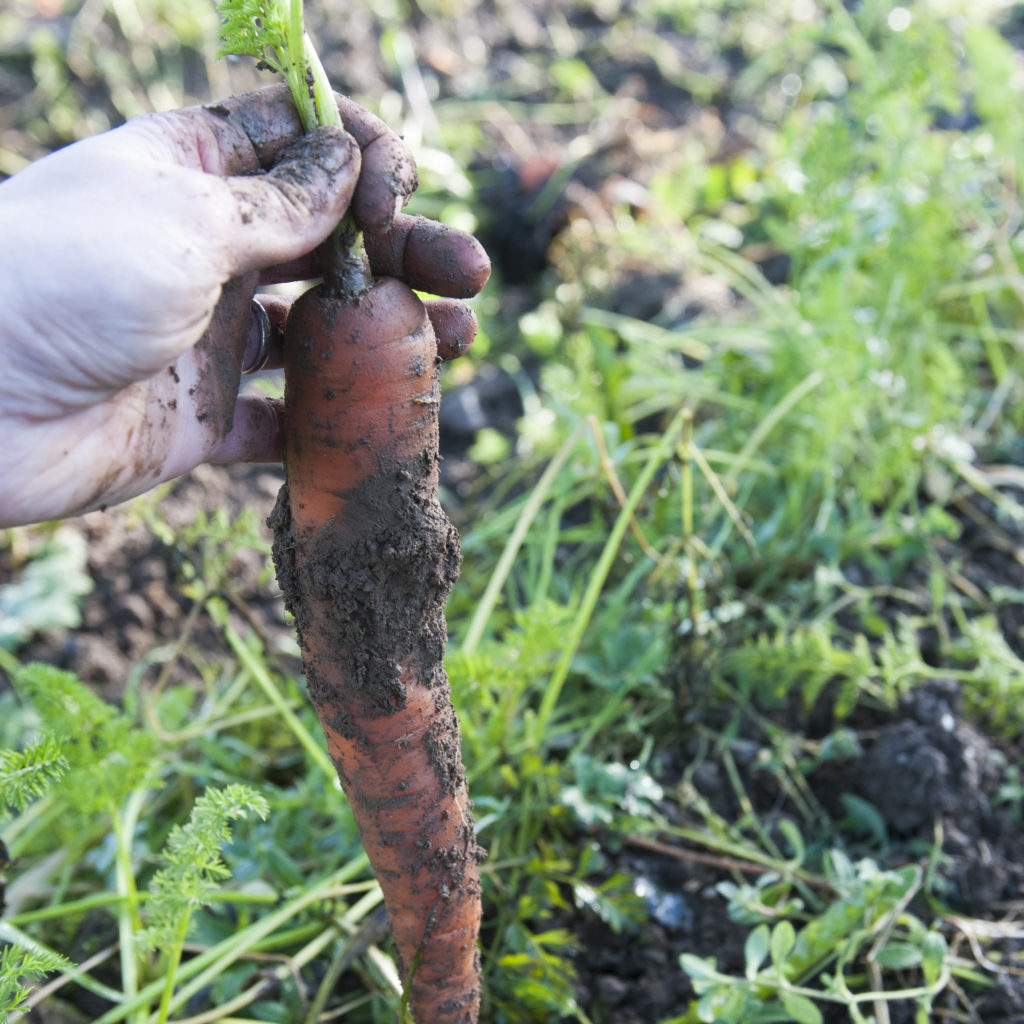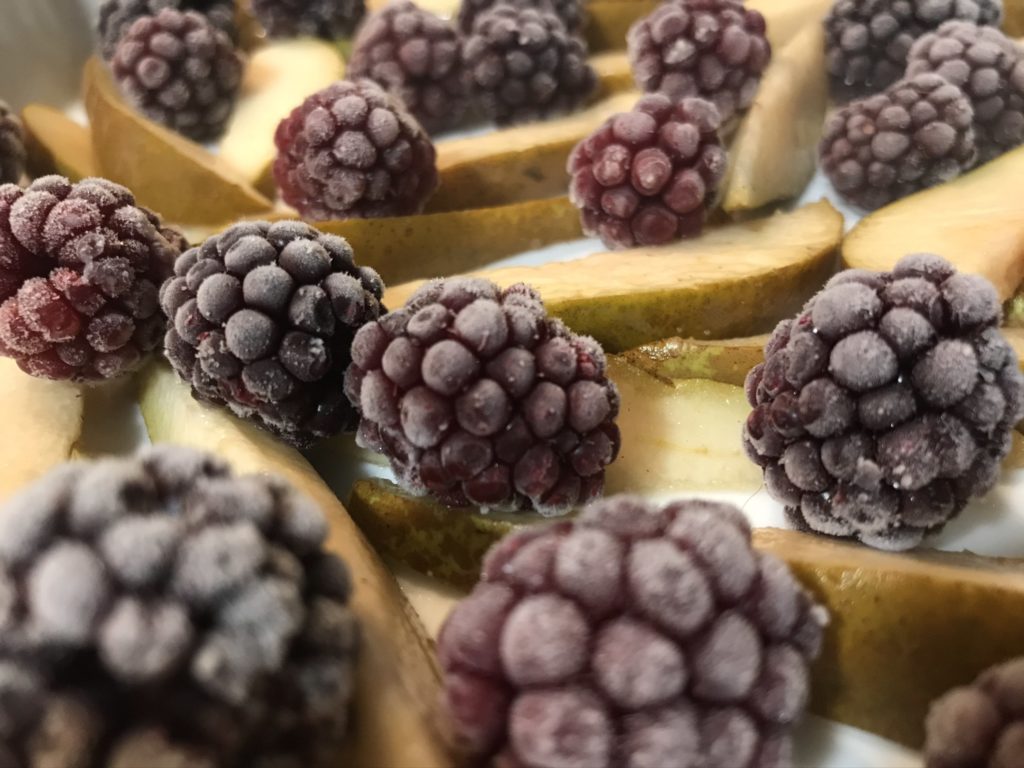
Clafoutis is a classic French cake which is actually more like a pudding. Traditionally made with cherries, it’s best served scooped out of the flan dish whilst still slightly warm, with whipped cream or natural yoghurt – I recommend plant based versions of those of course! It is also delicious served like a cake – cold, in slices – but doesn’t stay fresh much longer than 2 days. If you plan to serve it cold, then I recommend baking it in a lined or loose-bottomed cake tin so that it can be turned out onto a plate in one piece. Otherwise bake it in a flan dish or baking tray for the pudding version. This is one of those cakes that can easily be made gluten free by doing a straight substitute with gluten free flour. I always add a little extra liquid when using gluten free flour as it tends to need more hydration than regular wheat flour, so up the oat milk a little if you make it gluten free.
If you’ve not baked with aquafaba before, it’s a bit of a revelation! Aquafaba is the viscous liquid result of boiling beans or chickpeas. You can get it by draining a tin of white beans or chickpeas over your mixing bowl. Aquafaba is a really useful product which is normally washed down the sink. It’s an egg white replacement and with a little effort can even whisk up into meringue. I usually make sure I get the unsalted tins of beans/chickpeas for baking cakes, but the salted version also works absolutely fine. Salt actually enhances the flavours of fruit and sweet dishes, but I usually just use a pinch. So if you are using the aquafaba from a salted can of beans/chickpeas, then leave out the recommended pinch of salt and just taste the batter and see if it could do with a little extra sugar before you bake. I make a savoury version of this recipe too which I will share another day, think cherry tomato or asparagus clafoutis…perfect for summer lunches with salads.
The pears from the farm are so delicious and in season right now. So I’ve made this seasonal variation of my cherry clafoutis (recipe illustration from my book below) with pear slices and frozen blackberries. You can use any fruit you like of course. In Spring I love making a rhubarb version where I drench the raw rhubarb chunks in elderflower cordial and then sprinkle some flaked almonds on top of the batter before baking. Raspberry clafoutis has got to be my kids favourite. What fruity combinations will you try?
💚 Liz
Did you make this recipe? Let us know how it went in the comments below and share it with your friends. If you like this recipe, you’ll love my book. Add it to your usual order at Green Earth Organics.
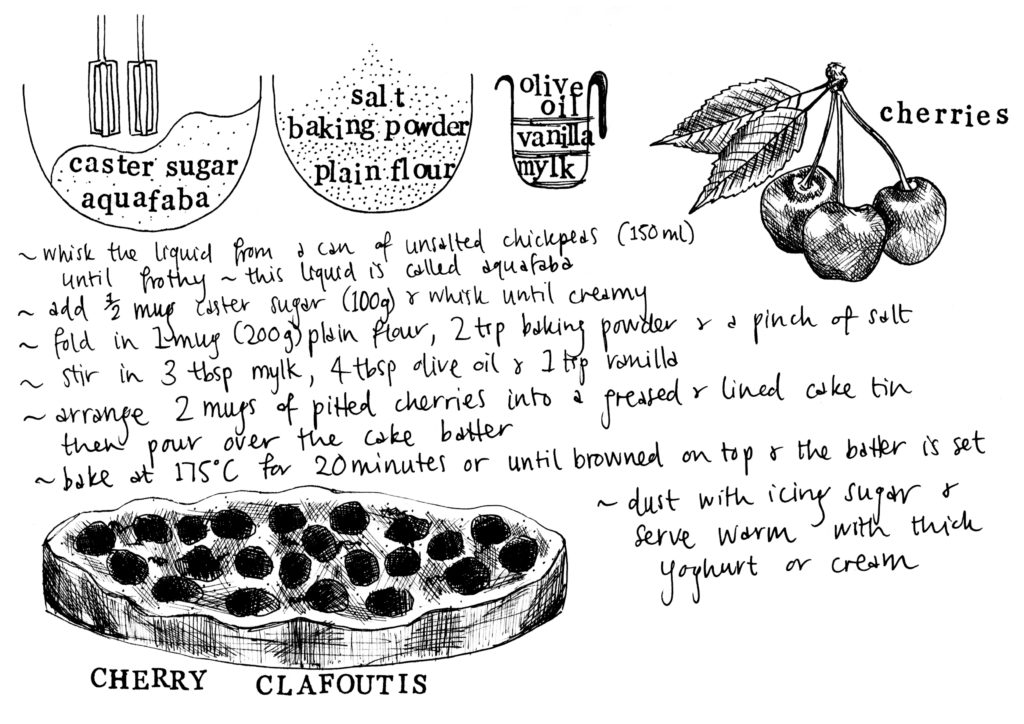
Ingredients (serves 8)
- Pears – 3 or 4 ripe
- Blackberries – frozen or fresh – a couple of handfuls
- Aquafaba – from 1 tin of white beans/chickpeas, normally around 150ml
- Caster sugar – 100g
- Plain flour – 200g
- Baking powder – 2 tsp
- Salt – pinch (leave out if using aquafaba from a salted tin of beans
- Oat milk – 3 tbsp
- Olive oil or Rapeseed oil – 4 tbsp
- Vanilla – 1 tsp
- Icing sugar – 1 tsp or so for dusting
- Whipping cream or Yoghurt to serve
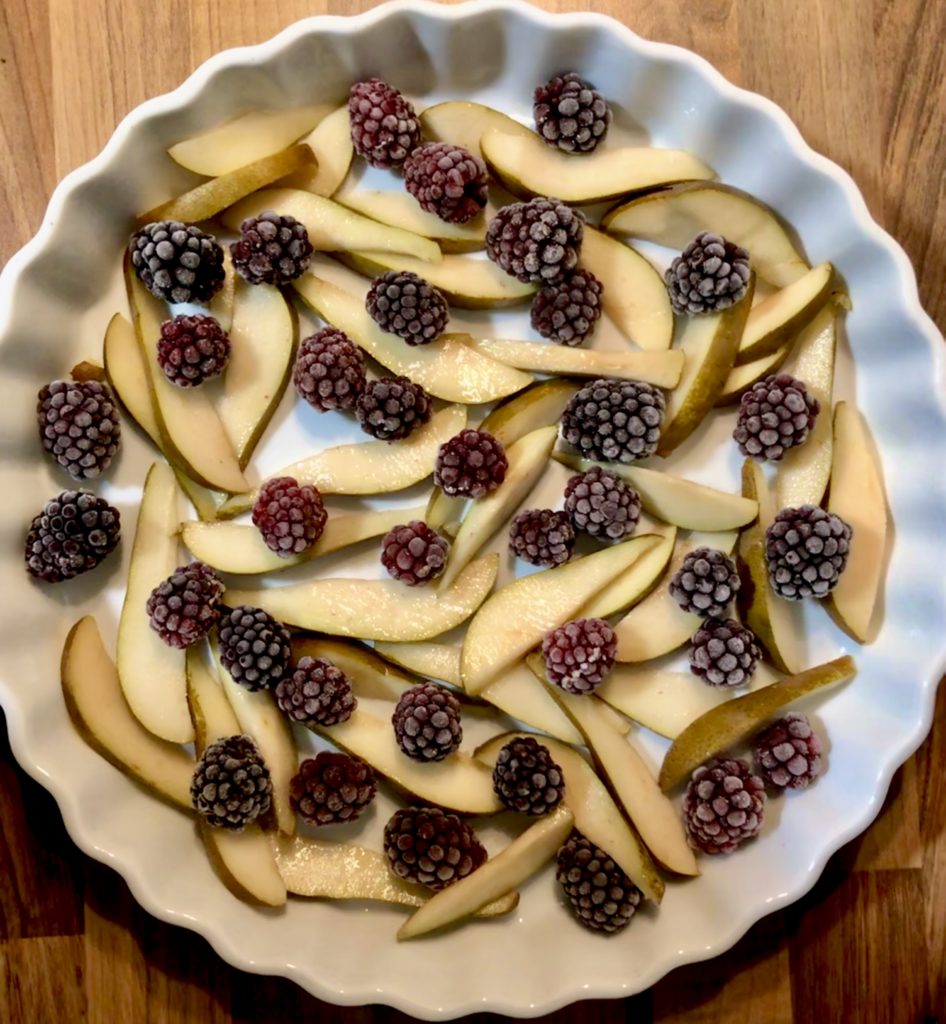
Method
This pudding is really simple to put together. Core and slice your pears and arrange them in a flan dish or baking tray. Sprinkle over some frozen or fresh blackberries. Then make the batter, all in one mixing bowl. You’ll need an electric whisk and a mug to use as a measuring device.
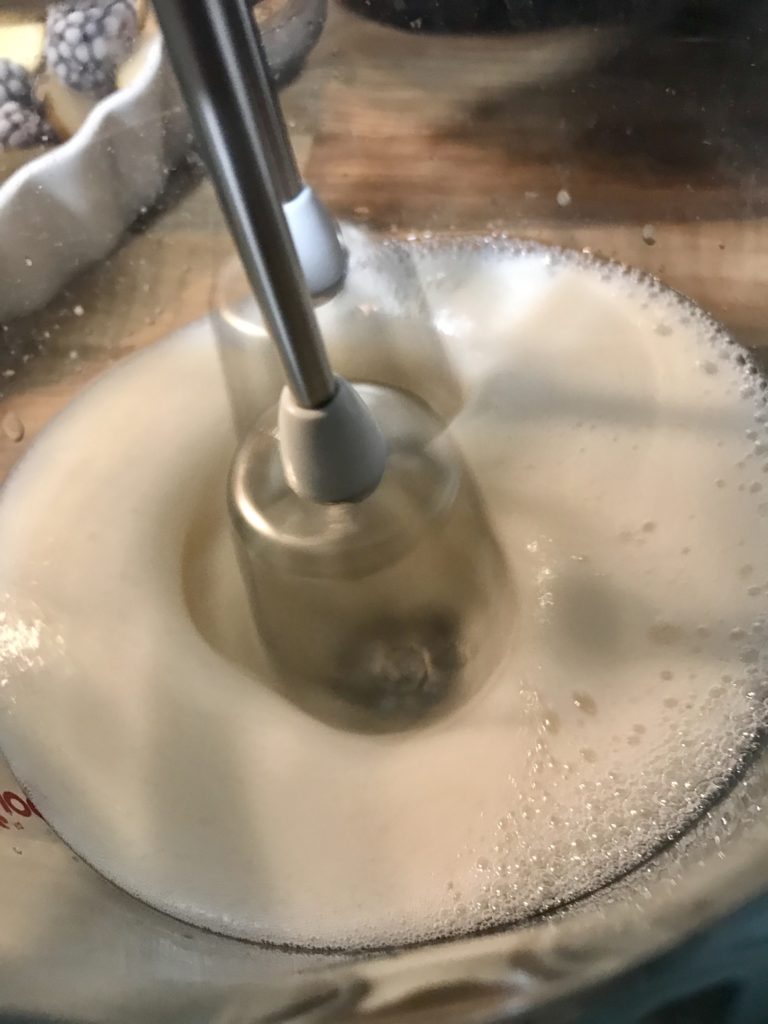
Drain the aquafaba from a tin of white beans or chickpeas into a mixing bowl. Use an electric whisk and fluff up the aquafaba by whisking on high for a few minutes..
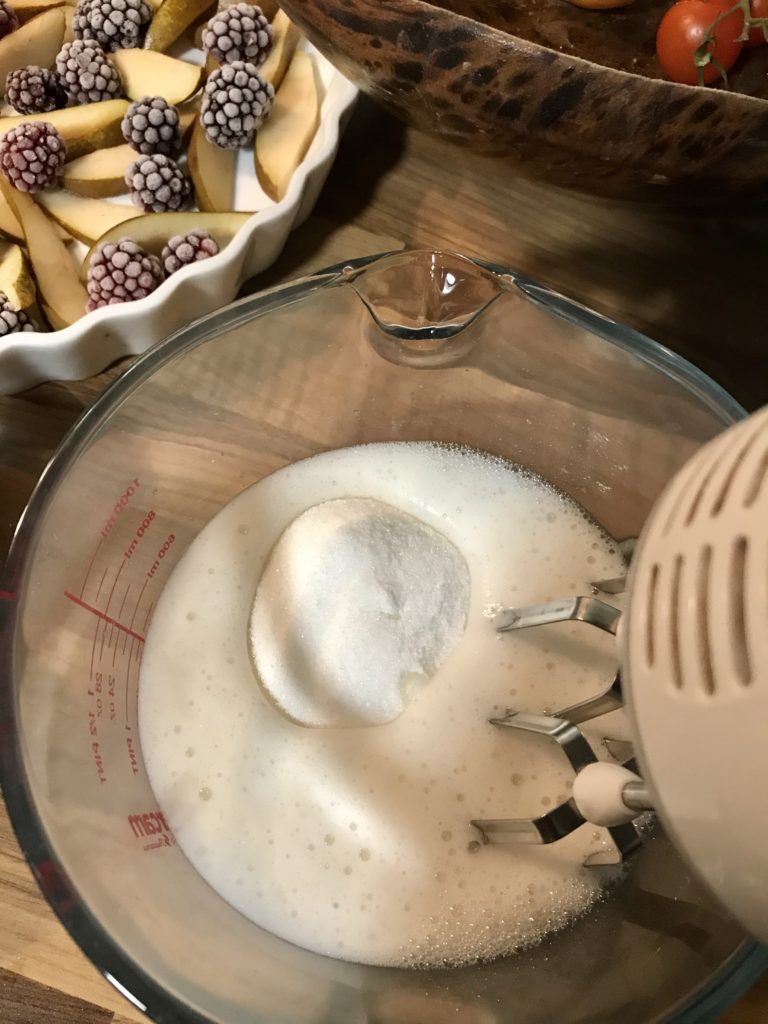
Add half a mug of caster sugar (the cane sugar from our shop works too) and whisk again until creamy. This recipe, like most of my recipes, is very forgiving. I usually don’t bother weighing the ingredients. The aquafaba from a regular tin of beans/chickpeas is normally around 150ml but it doesn’t matter if it’s a bit over or under that. For the sugar, I just half fill a mug and tip it in…but you can weigh 100g if you like.
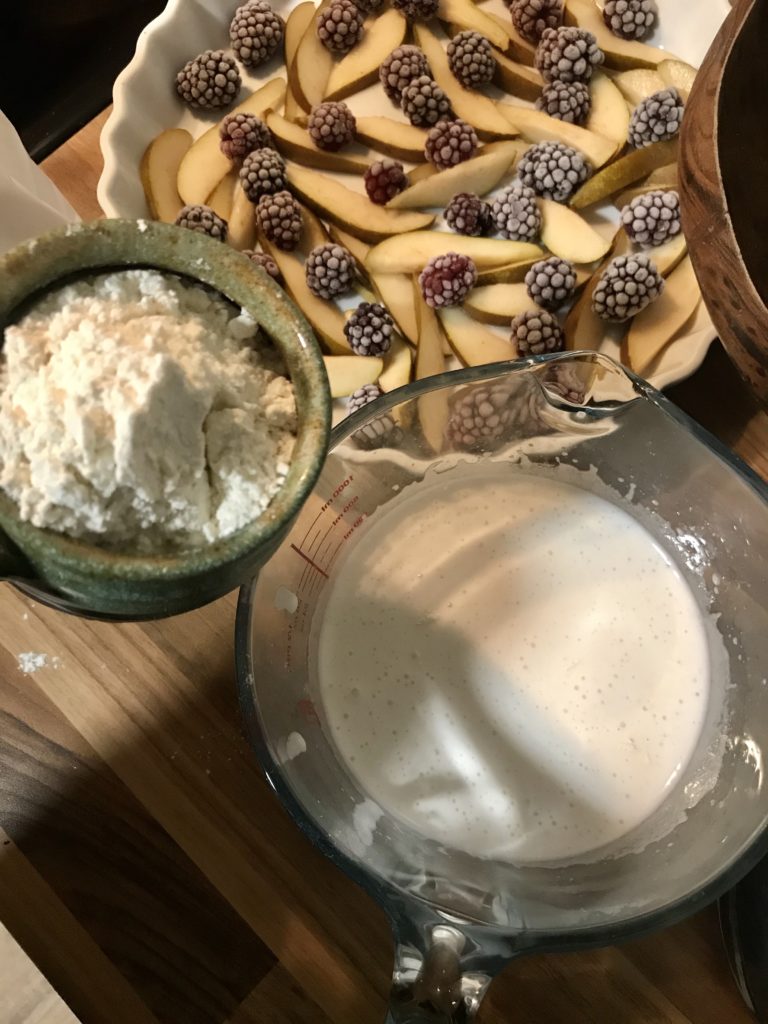
Then fold in a mug (or around 200g) of plain flour, 2 tsp baking powder and a pinch of salt. It doesn’t have to be fully incorporated at this stage. You’ll be adding the liquid next and that will help bring it all together. The trick to a tender cake crumb is not over-mixing the batter, so just gently fold the dry ingredients in.
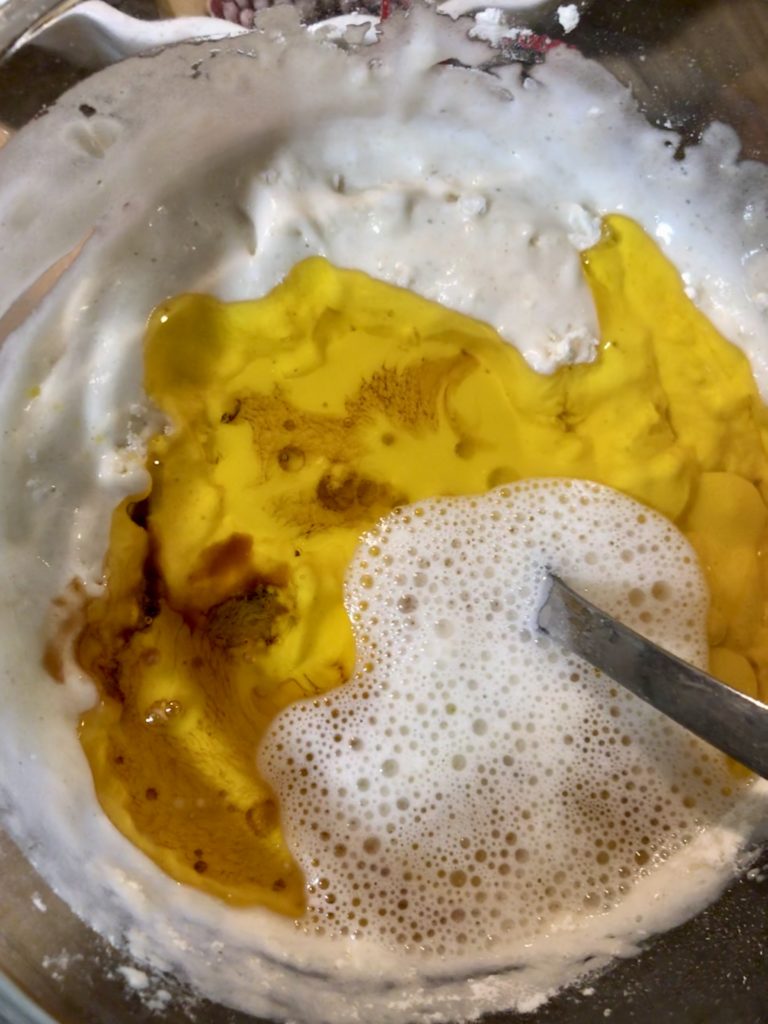
Then add the 3 tbsp oat milk, 4 tbsp oil and 1 tsp vanilla and gently stir until you have a fairly smooth batter. I used a gorgeous, cold pressed rapeseed oil this time and it gave the batter a beautiful golden hue and was delicious!
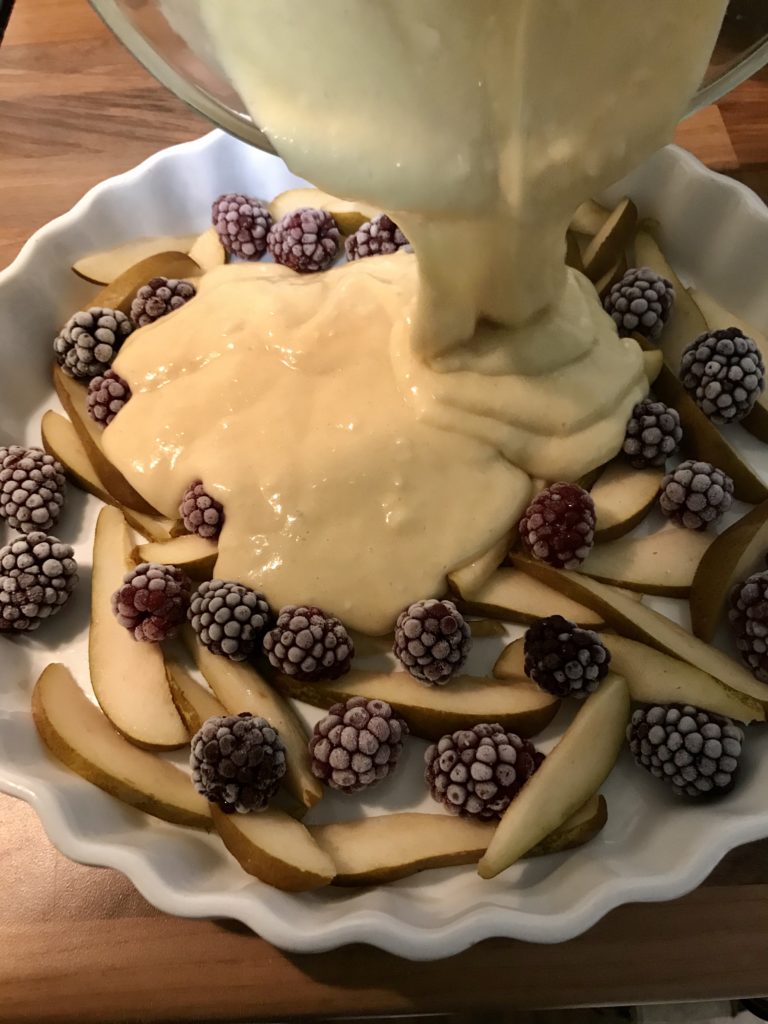
Pour the batter over the fruit and gently smooth it out using the back of the spoon. It will spread and rise in the oven so don’t worry if there are any small gaps around the sides of the dish.
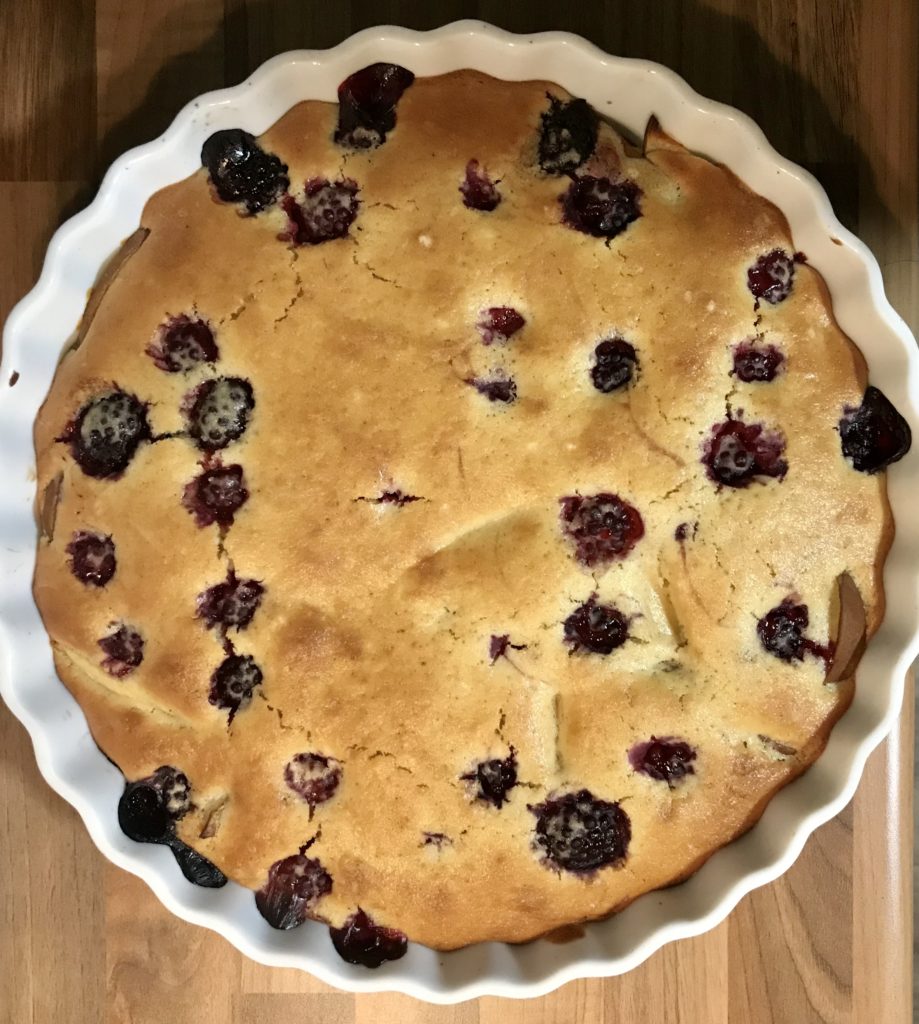
Bake the clafoutis at 175C for 20 minutes or until browned on top and the batter is set. A larger dish will make a shallower cake which will only take 20 minutes, a smaller dish will make a deeper cake which will take longer – just keep an eye on it.
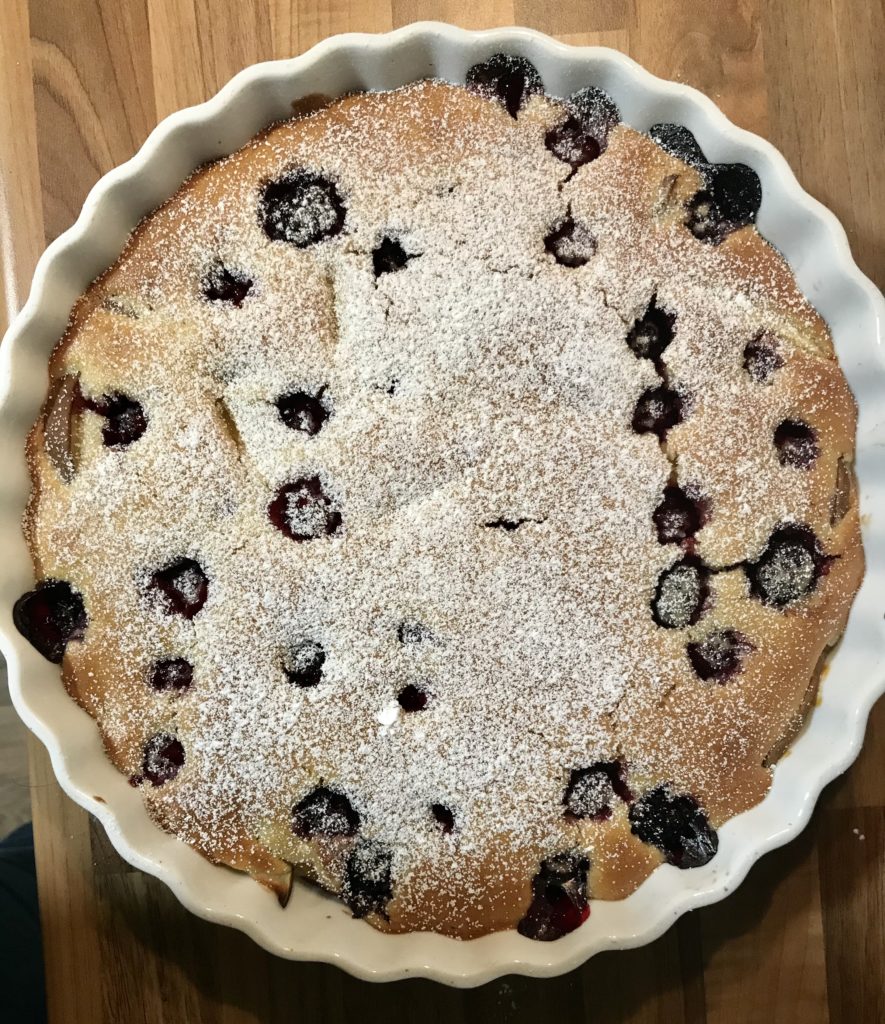
Dust with icing sugar and serve warm as a pudding, or cold in slices as a fruity cake. Enjoy!
